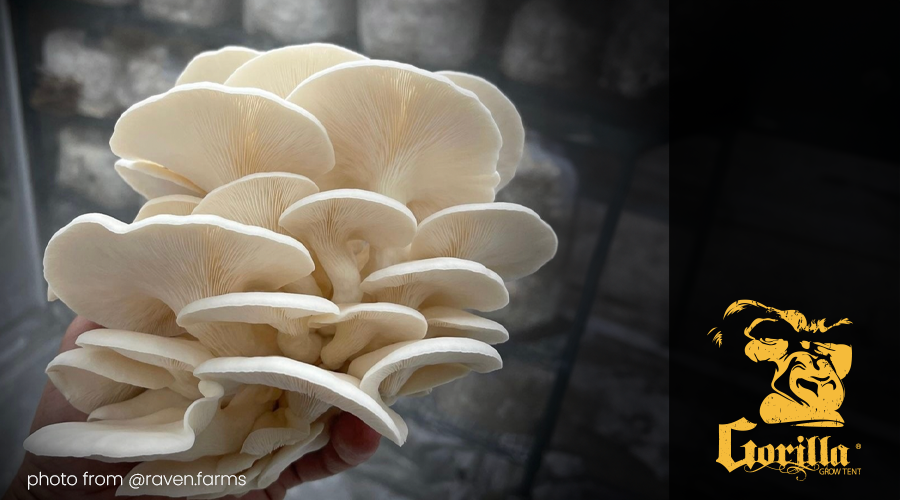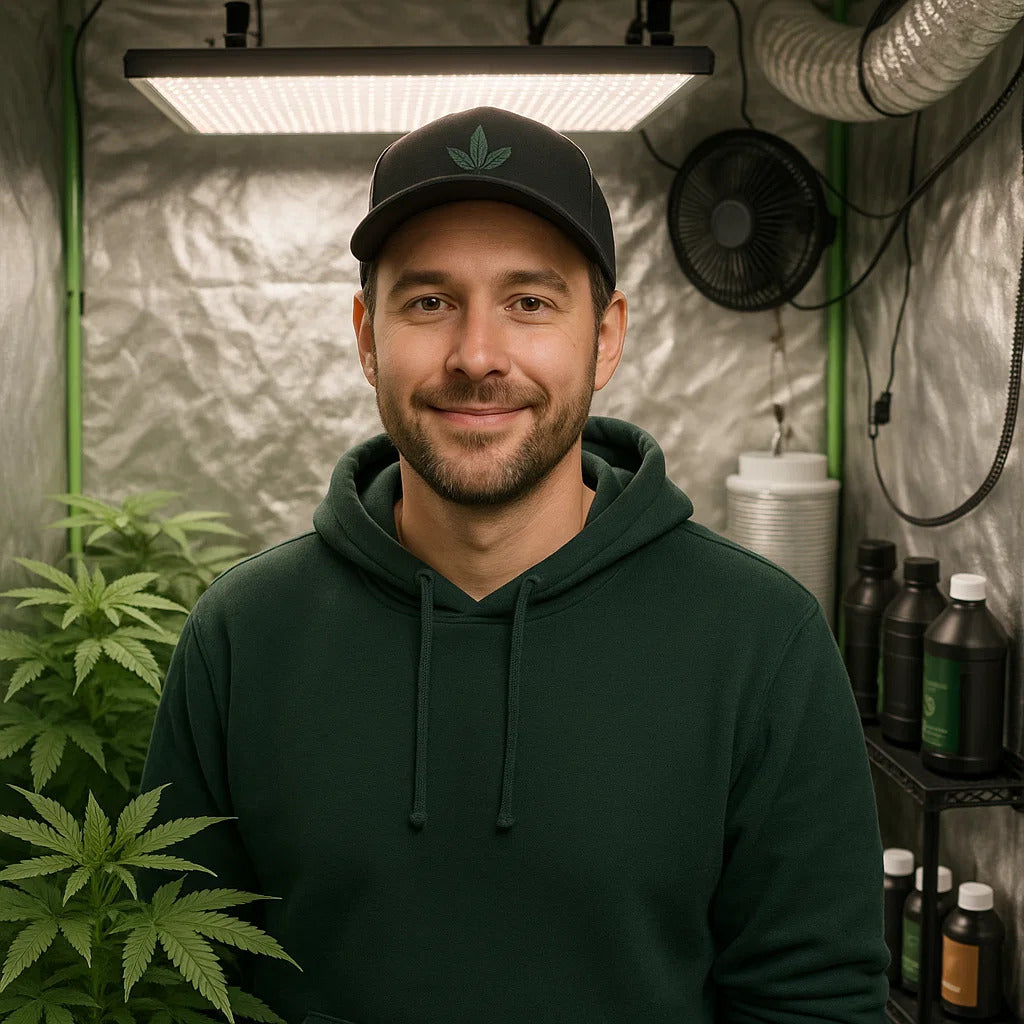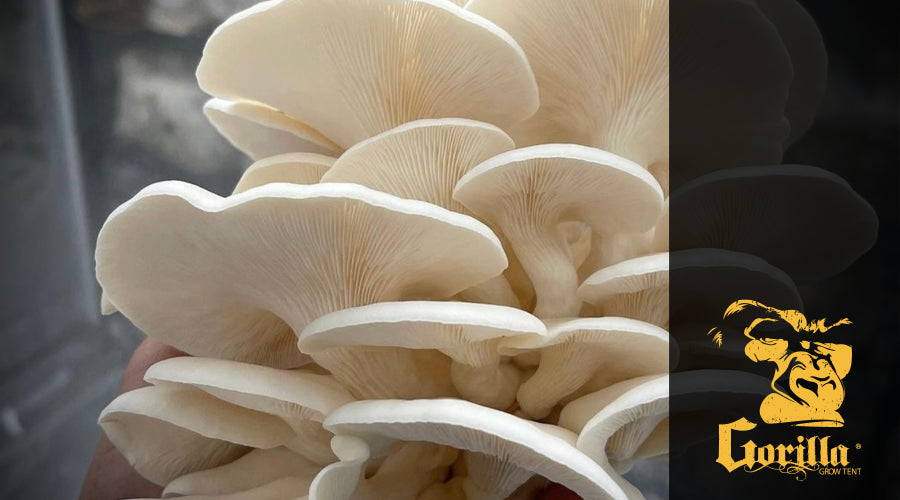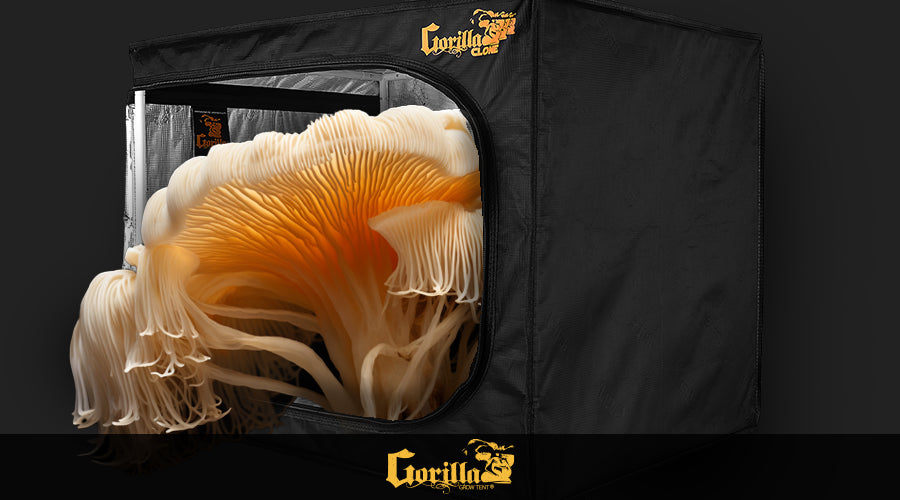
A Beginner's Guide to Cultivating Mushrooms at Home
Growing Mushrooms at Home
Mushrooms, those fascinating and versatile fungi, have been cherished for centuries for their unique flavors, nutritional benefits, and potential medicinal properties. Cultivating mushrooms at home is a rewarding and sustainable hobby that allows you to experience the magic of growing these edible wonders right in your own space. In this beginner's guide, we'll walk you through the essential steps to successfully grow mushrooms at home, turning your kitchen or garden into a mini fungi farm.

Choose Your Mushroom Variety
The first step to growing mushrooms at home is selecting the right variety to cultivate. Starting with some of the more forgiving species, such as oyster mushrooms or shiitake mushrooms, is recommended for beginners. These varieties are more adaptable to different growing conditions and are a great introduction to mushroom cultivation.
Gather Your Supplies
Before diving into growing mushrooms, please ensure you have the necessary supplies. You'll need mushroom spawn (mycelium), a growing medium (substrate), a growing container (such as a plastic bucket or a grow bag), and some basic tools like a spray bottle for misting and a clean working area.
Prepare the Growing Medium
The growing medium serves as the nourishing foundation for your mushrooms to flourish. Popular substrates include a mixture of hardwood sawdust, straw, and gypsum. Sterilize or pasteurize the substrate to eliminate competing microorganisms hindering mushroom growth. This step is crucial to ensure a contamination-free environment for your mushrooms.
Inoculation
Inoculation is the process of introducing mushroom spawn into the prepared substrate. You can purchase pre-made spawns from reputable suppliers or even learn to create your own by expanding mushroom mycelium on a nutrient-rich medium. Mix the spawn into the substrate, distributing it evenly to encourage even colonization.
Incubation
During the incubation phase, your mushroom mycelium will colonize the substrate. Maintain the appropriate temperature and humidity levels in a clean, dark environment. Depending on the mushroom species and conditions, this phase can take a few weeks.
Fruiting Conditions
Once the substrate is fully colonized, it's time to encourage the mushrooms to grow. Create optimal fruiting conditions by introducing fresh air, light, and proper humidity. Some mushrooms require light to initiate fruiting, while others prefer darkness. Regular misting will help maintain the required humidity level for successful fruiting.
Harvesting
As your mushroom caps mature, they'll develop distinct shapes and sizes. Harvest them by gently twisting or cutting at the base of the stem. Harvest them before the caps flatten out completely to ensure the best flavor and texture.
Enjoy the Fruits of Your Labor
Now comes the most satisfying part—enjoying your homegrown mushrooms! Incorporate them into your favorite recipes, from sautéed mushrooms to risottos and stir-fries. The flavor and freshness of homegrown mushrooms will add a new dimension to your culinary creations.
Embarking on the journey of cultivating mushrooms at home is a fulfilling and educational experience that connects you with the natural world in a unique way. As you gain confidence and expertise, you can explore different mushroom varieties and experiment with more advanced cultivation techniques.
Selecting the Right Grow Tent
When choosing a grow tent for mushroom cultivation, consider factors such as size, durability, and features. Opt for a tent with sufficient space to accommodate your desired mushroom production volume. Look for tents made from sturdy materials, such as thick fabric with a reflective interior, to maximize light distribution. A zipper-front design and multiple ventilation ports are also advantageous for easy access and proper airflow.
Troubleshooting and Tips
Contamination Management: Contamination can be a challenge in mushroom cultivation. To minimize the risk, maintain strict hygiene practices. Use gloves, sterilize your tools, and work in a clean environment. If you notice any unusual colors or odors in your growing container, it may indicate contamination. In such cases, it's best to discard the contaminated batch and start anew.
Temperature and Humidity Control: Different mushroom species have specific temperature and humidity requirements. Invest in a thermometer and hygrometer to monitor and maintain the optimal conditions for your chosen variety. Consider using a small space heater or humidifier to regulate the environment, especially if you live in an area with extreme weather conditions.
Air Exchange: Proper air exchange is crucial for mushroom growth. You can achieve this by fanning the growing container a few times a day or using a small fan on a timer. Good air circulation helps prevent the buildup of carbon dioxide and encourages healthy mushroom development.
Fruiting Chamber Setup: As you progress, you might want to set up a designated fruiting chamber for your mushrooms. This space can be a repurposed storage bin or a DIY tent-like structure. It allows you to create a controlled environment for fruiting, making it easier to manage humidity, temperature, and lighting conditions.
Drying and Preserving: If your harvest yields more mushrooms than you can immediately use, consider drying or preserving them. Dehydrating mushrooms allows you to store them for extended periods while retaining their flavor. Store dried mushrooms in an airtight container in a cool, dry place.
Continuing Your Mushroom Journey
Exploring New Varieties: Once you've mastered the basics, don't hesitate to explore a wide range of mushroom varieties. Each species has its unique flavors, textures, and growing requirements. From lion's mane and maitake to enoki and morels, there's a vast world of mushrooms to discover.
Scaling Up: If you find yourself truly captivated by mushroom cultivation, you can consider scaling up your operation. Experiment with larger growing containers, multiple batches, or even building a dedicated mushroom growing space. As you gain experience, you can fine-tune your techniques and achieve even more impressive yields.
Community and Resources: Joining online forums, social media groups, or local mushroom clubs can provide you with valuable insights, troubleshooting advice, and a sense of community. Sharing experiences and learning from fellow mushroom enthusiasts can enhance your skills and enthusiasm for the hobby.
Eco-Friendly Benefits of Home Mushroom Cultivation
Beyond the personal rewards of enjoying homegrown mushrooms, there are several eco-friendly benefits to cultivating mushrooms at home:
Waste Reduction: Mushroom cultivation allows you to repurpose agricultural and forestry byproducts, such as sawdust and straw, into nutritious food. Utilizing these materials that might otherwise go to waste reduces landfill burden and promotes a more sustainable food system.
Carbon Footprint: Growing mushrooms at home requires less land, water, and energy compared to traditional livestock and crop production. Mushrooms also efficiently convert organic matter into protein, requiring fewer resources to yield the same amount of nutrition.
Soil Health: Some mushroom cultivation methods involve using the spent substrate as a soil amendment. This practice enriches the soil with organic matter, nutrients, and beneficial microorganisms, improving overall soil health and fertility.
Biodiversity: By cultivating a variety of mushroom species, you contribute to biodiversity and support healthy ecosystems. Some mushrooms have symbiotic relationships with trees and plants, aiding in nutrient exchange and ecosystem resilience.
Going Beyond the Basics - Advanced Techniques
As your confidence and expertise grow, you might want to explore more advanced mushroom cultivation techniques:
Log Cultivation: This technique involves inoculating hardwood logs with mushroom spawn, allowing them to slowly colonize and produce fruit over time. Species like shiitake and oyster mushrooms can thrive in this environment.
Indoor Mushroom Cultivation: Consider creating a dedicated indoor space equipped with controlled lighting, temperature, and humidity. This allows you to cultivate mushrooms year-round, regardless of external weather conditions.
Medicinal Mushrooms: Delve into the world of medicinal mushrooms, such as reishi, turkey tail, and chaga. These fungi are believed to offer various health benefits, from immune support to antioxidant properties. Research their specific growing requirements and potential applications.
Sharing Your Knowledge
Once you've mastered the art of home mushroom cultivation, consider sharing your knowledge and passion with others. Host workshops, create online tutorials, or simply introduce friends and family to the joys of growing mushrooms. Inspiring others to embark on their own fungi-filled journey can contribute to a more interconnected and sustainable community.
Cultivating Curiosity and Wonder
As you become more deeply involved in the world of mushroom cultivation, you'll likely find yourself embracing a sense of curiosity and wonder. The complex life cycle of mushrooms, their intricate interactions with the environment, and their role in nutrient cycling can open the door to a lifelong exploration of mycology—the study of fungi.
Exploring Culinary Creativity
As you become more adept at growing mushrooms at home, you'll find endless opportunities to explore culinary creativity. Experiment with different cooking methods and flavor pairings to elevate your mushroom dishes to new heights. Sautee them with garlic and herbs, stuff them with flavorful fillings, or use them as a meat substitute in your favorite recipes. The unique textures and tastes of homegrown mushrooms can add a gourmet touch to your meals, impressing friends and family alike.
DIY Mushroom Products
Take your mushroom cultivation skills to the next level by creating a range of mushroom-based products. For example, you can make your own mushroom powders by dehydrating and grinding mushrooms, adding an umami-rich flavor to sauces, soups, and marinades. Another idea is to infuse oils or vinegars with dried mushrooms, imparting their essence into your cooking. These homemade products can make wonderful gifts for fellow food enthusiasts.
Mushroom Art and Craft
Mushrooms have inspired artists and crafters for centuries. Use your homegrown mushrooms as subjects for photography, painting, or even create mushroom-inspired sculptures. You can also experiment with making mushroom spore prints, a unique way to capture the intricate patterns and colors of mushroom caps onto paper or fabric.
Mushroom Identification and Foraging
As your passion for mushrooms grows, you might develop an interest in mushroom identification and foraging. Learning about wild mushrooms in your area can be a rewarding extension of your cultivation hobby. However, it's crucial to approach wild mushroom foraging with caution and seek guidance from experienced foragers or mycologists to ensure your safety.
Educating Others
Share your mushroom-growing journey with your community and beyond. Organize workshops, webinars, or social media posts to teach others about the joys and benefits of cultivating mushrooms at home. Your expertise and enthusiasm can inspire others to embrace this sustainable and fulfilling hobby.
Embracing Sustainability
Growing mushrooms at home is not only a source of fresh food but also a way to contribute to a more sustainable lifestyle. As you nurture your fungi, reflect on the broader environmental implications of your actions. Consider composting your spent substrate, reducing food waste, and adopting other eco-friendly practices that align with your mushroom-growing ethos.
Mushroom-Based Remedies and Wellness
Beyond their culinary delights, mushrooms have long been revered for their potential health benefits. Consider delving into the world of mushroom-based remedies and wellness products. Research the medicinal properties of various mushroom species and explore how you can incorporate them into teas, tinctures, or supplements. Many mushrooms, such as lion's mane and cordyceps, are believed to support cognitive function, energy levels, and overall well-being.
Participate in Citizen Science
As a dedicated mushroom cultivator, you can also contribute to scientific research and conservation efforts. Participate in citizen science projects that involve documenting mushroom species, monitoring fungal biodiversity, or studying the ecological roles of fungi in your local environment. Your observations and data can contribute to broader scientific knowledge and help protect fragile ecosystems.
Cultivating Exotic and Rare Varieties
As you become more experienced, challenge yourself by exploring the world of exotic and rare mushroom varieties. Delve into the cultivation of species like morels, truffles, or even psychedelic mushrooms (where legal and ethical). These endeavors require specialized techniques and knowledge, offering a chance to push your skills to new heights.
A Lifelong Passion for Mushrooms
What begins as a humble curiosity about growing mushrooms at home can evolve into a lifelong passion that encompasses creativity, sustainability, and a deep appreciation for the natural world. As you continue to learn, experiment, and explore, you'll uncover new dimensions of mycology, from advanced cultivation techniques to the art of preserving and sharing your harvest. Embrace the journey, relish the rewards, and let the world of mushrooms open doors to a world of wonder and discovery that will enrich your life for years to come.
Unveiling the Power of Grow Lights for Mushroom Cultivation
Thanks to its versatility, nutritional benefits, and unique flavors, mushroom cultivation has gained immense popularity in recent years. Whether you're a seasoned mycophile or a beginner looking to embark on a fungal adventure, one crucial factor that can significantly impact your mushroom's growth and quality is the lighting conditions they receive.
In this comprehensive guide, we will delve into the world of grow lights for mushrooms, exploring their importance, types, and best practices to ensure a bountiful harvest.
Mushrooms and Lumens: A Deep Dive into the Science of Grow Lights
The Importance of Proper Lighting
Mushrooms are unique organisms that differ from plants in their growth requirements. While plants primarily rely on photosynthesis to create energy from light, mushrooms use light primarily for signaling and development. Proper lighting conditions can influence various aspects of mushroom cultivation, including:
Fruiting Body Formation: Adequate lighting is essential during the fruiting stage of mushroom growth. Light signals trigger the development of fruiting bodies (mushroom caps and stems) and ensure their proper shape and size.
Mycelium Growth: During the initial stages of cultivation, mycelium – the vegetative part of the fungus – benefits from indirect light. Light helps regulate mycelial growth and promotes healthy colonization of the substrate.
Directional Growth: Mushrooms exhibit positive phototropism, meaning they grow towards a light source. This natural behavior can be harnessed to manipulate the direction of growth, resulting in well-formed and aesthetically pleasing mushrooms.
Types of Grow Lights for Mushrooms
Fluorescent Lights: These are a cost-effective option for mushroom cultivation. Cool white or daylight spectrum fluorescent tubes can be used to provide indirect, diffuse light, suitable for mycelium growth.
LED Grow Lights: LED technology has revolutionized indoor gardening. Full-spectrum LED grow lights mimic natural sunlight and provide the specific wavelengths of light needed for both mycelium growth and fruiting body development.
Incandescent Lights emit heat and light, which can be advantageous in colder environments. However, there may be more energy-efficient choices.
Natural Light: You can use natural light if you're cultivating mushrooms near a window with indirect sunlight. However, natural light can be inconsistent and might require supplementary artificial lighting.
Best Practices for Using Grow Lights
Understand the Mushroom Species: Different mushroom species have varying light requirements. Research the specific needs of the mushrooms you're cultivating to provide optimal lighting conditions.
Light Intensity and Duration: Provide low-intensity light for 12-16 hours daily for mycelium growth. Increase the light intensity during fruiting and reduce the duration to 8-12 hours.
Distance from Light Source: Maintain an appropriate distance between the grow lights and the mushroom substrate. Too much intensity or proximity can lead to overheating and damage.
Light Spectrum: Full-spectrum lights are ideal, as they cover the range of wavelengths mushrooms require for healthy growth and development.
Light Distribution: Ensure even light distribution throughout the cultivation area to prevent uneven growth and ensure all mushrooms receive adequate light exposure.
Selecting the Right Grow Light Setup
Single vs. Multi-Tier Setup: You can choose between a single-tier or multi-tier grow light setup depending on your available space and cultivation goals. Multi-tier setups maximize vertical space, allowing you to cultivate more mushrooms in a limited area.
Customizing Light Cycles: Experiment with different light cycles during the fruiting stage to observe how your mushrooms respond. Some growers opt for a simulated sunrise and sunset effect to mimic natural light changes, which can positively impact fruiting.
Supplementary Lighting: Consider using a combination of artificial and natural light in larger setups or spaces with limited natural light. This approach ensures consistent lighting conditions and can enhance mushroom growth.
Advanced Tips for Optimal Results
Light Spectrum Manipulation: Research suggests that specific light spectra can influence certain aspects of mushroom growth, such as stem elongation or cap expansion. Tailoring the light spectrum to your desired outcomes can be a fascinating experiment.
UV Light Exposure: Controlled exposure to UV light can stimulate the production of secondary metabolites in mushrooms, potentially enhancing their medicinal and nutritional qualities. However, cautious experimentation is advised, as excessive UV exposure can be harmful.
Automated Lighting Systems: Consider using automated lighting systems equipped with timers and light sensors for precision and convenience. These systems can help you maintain consistent light cycles without constant manual adjustments.
Troubleshooting and Common Pitfalls
Light Stress: Too much light or intense light exposure can stress mushrooms, leading to abnormal growth patterns or reduced yields. Monitor your mushrooms closely and adjust the light intensity if necessary.
Light Contamination: Just like any other aspect of cultivation, cleanliness is vital. Ensure your grow lights are kept clean and free from contaminants that could hinder mushroom growth.
Inadequate Fruiting Conditions: While light is essential, it's just one piece of the puzzle. Factors like humidity, fresh air exchange, and substrate composition also play significant roles in successful mushroom fruiting.
Harnessing Light: Unveiling the Mysteries Behind Mushroom Photosynthesis
While mushrooms don't engage in photosynthesis like plants, their interaction with light is still fascinating and drives various aspects of their growth. Let's delve deeper into how mushrooms perceive and respond to light, shedding light on their unique relationship with this essential element.
Understanding Photomorphogenesis
Photomorphogenesis refers to the physical and developmental changes that organisms undergo in response to light. This process involves a delicate dance between various photoreceptors and light-sensitive molecules for mushrooms. The two main photoreceptors responsible for mushroom photomorphogenesis are:
Blue Light Photoreceptors (BLR): These receptors are crucial in regulating mushroom development. When these photoreceptors absorb blue light, it triggers a series of biochemical reactions that influence stem elongation, fruiting body formation, and pigment synthesis.
White Light Photoreceptors: While mushrooms lack the green pigment chlorophyll used in photosynthesis, they can still sense white light, which contains a range of colors across the spectrum. White light impacts diverse biological processes, including sporulation and pigmentation.
Photoreceptor Signaling Pathways
The interaction between photoreceptors and light initiates signaling pathways that orchestrate mushroom growth and development. One well-studied example is the "White Collar Complex" pathway in fungi like the model organism Neurospora crassa. This pathway involves the activation of specific genes that regulate various processes, such as circadian rhythms and forming fruiting bodies.
Circadian Rhythms and Light
Mushrooms, like many other organisms, possess internal biological clocks known as circadian rhythms. These rhythms dictate various physiological and developmental processes, including when mushrooms are most receptive to light-induced changes. By aligning light exposure with their circadian rhythms, growers can optimize fruiting body formation and other crucial growth stages.
Beyond Growth: The Therapeutic Potential of Light
In recent years, research has hinted at the potential therapeutic benefits of light exposure for mushrooms. Just as light can impact the synthesis of secondary metabolites in plants, specific light wavelengths can influence the production of bioactive compounds in mushrooms. This intriguing area of study has led to investigations into enhancing various mushroom species' nutritional and medicinal properties.
The Quest for Optimal Lighting Conditions
As we unravel the intricate interplay between mushrooms and light, the cultivation community is constantly pushing the boundaries of our knowledge. From designing custom lighting setups to exploring the impact of various light spectra on mushroom metabolites, enthusiasts are at the forefront of discovering innovative techniques to maximize yields and quality.
In the pursuit of the perfect mushroom harvest, it's clear that light profoundly influences every stage of growth. From mycelium expansion to the emergence of stunning fruiting bodies, the relationship between mushrooms and light is a captivating testament to the wonders of nature's complexity. So, as you embark on your own mushroom cultivation journey, remember that every photon of light brings you closer to unlocking the secrets of these remarkable fungi and their remarkable responses to the luminous world around them.
Happy mushroom growing, and may your fungi-fueled adventure be filled with endless growth and exploration!

Lena Myles
I'm a mushroom enthusiast and home cook based in Oregon. I'm passionate about foraging and creating fungi-focused recipes, especially delicious, plant-based dishes using gourmet mushrooms like trumpet, shiitake, and oyster. When I’m not in the kitchen, you’ll usually find me wandering the woods in search of new wild flavors.


